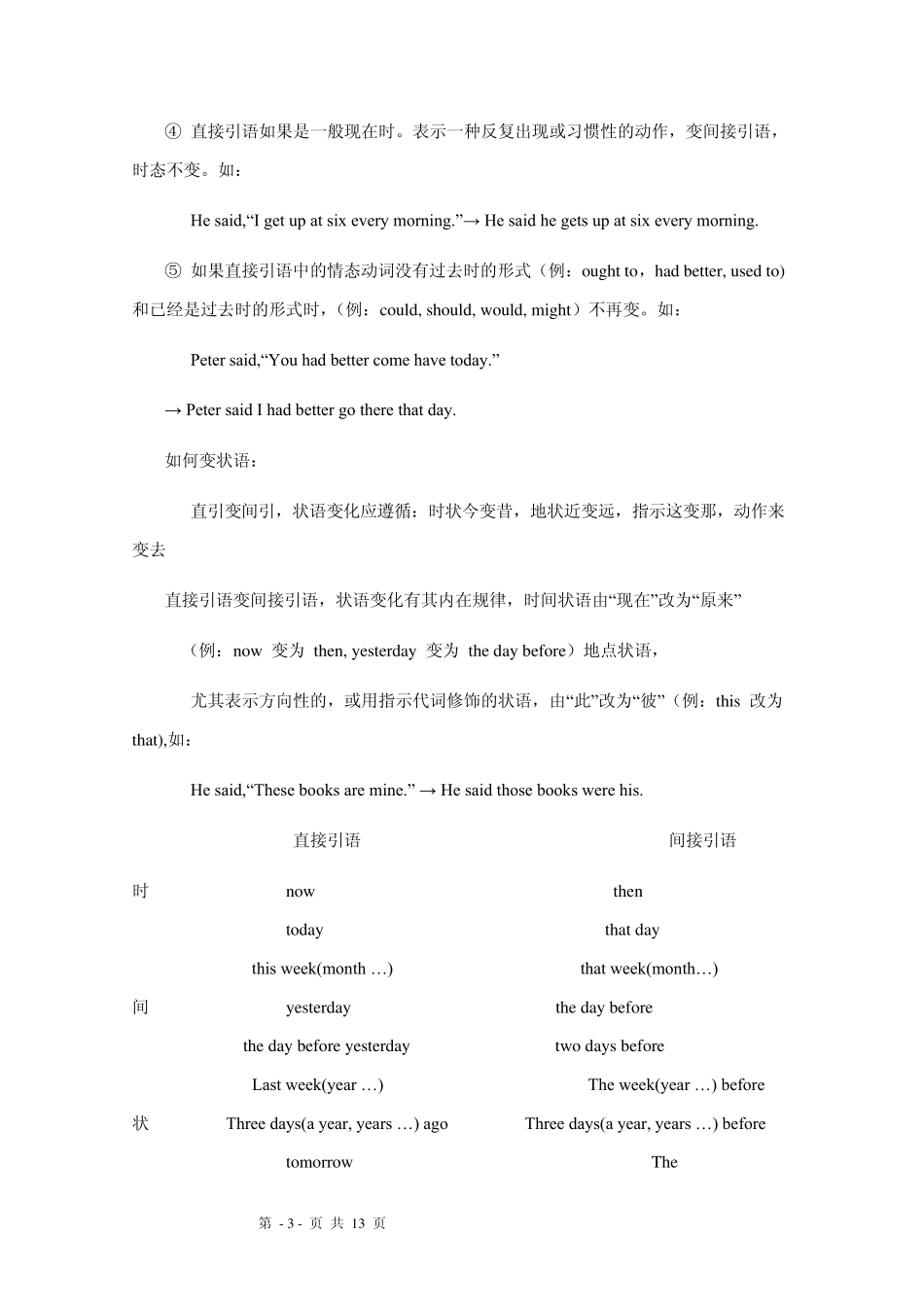第 - 1 - 页 共 13 页 直接引语变间接引语 说话人直接引用别人的原话叫直接引语。说话人用自己的话把别人的意思转述出来叫间接引语。 如何变人称: 口诀:“一随主,二随宾,第三人称不更新” “第一人称看主语,第二人称看宾语,宾语若是不存在,活用代词 I, me, my。” 注:“一随主”是指在直接引语变间接引语时,如果从句中的主语是第一人称或被第一人称所修饰。从句中的人称要按照主句中主语的人称变化如: She said,“My brother wants to go with me.” → She said her brother wanted to go with her. “二随宾”是指直接引语变间接引语时,若从句中的主语及宾语是第二人称,或被第二人你所修饰,从句中的人称要跟引号外的主句的宾语一致。如果引号外的主句没有宾语。也可以用第一人称,如: He said to Kate,“How is your sister now?” → He asked Kate how her sister was then. “第三人称不更新”是指直接引语变间接引语时。如果从句中的主语及宾语是第三人称或被第三人称所修饰从句中的人称一般不需要变化如: Mr. Smith said,“Jack is a good worker.” → Mr. Smith said Jack was a good worker. 如何变时态: 口诀:“主句谓语动词现在将来一般时,直引只变人称用原句,主句的谓语动词一般过去时,间引时态向后升一级; 主句的谓语动词一般过去时,直接引语在改为间接引语时,时态需要做相应的调整。” 第 - 2 - 页 共 13 页 直接引语 间接引语 一般现在时 一般过去时 现在进行时 过去进行时 现在完成时 过去完成时 一般过去时 过去完成时 过去完成时 过去完成时 一般将来时 过去将来时 如: 1) She said,“I have lost a pen.”→ She said she had lost a pen. 2) She said,“We hope so.”→ She said they hoped so. 3) She said,“He will go to see his friend.”→ She said he would go to see his friend. 但要注意在以下几种情况下。在直接引语变为间接引语时,时态一般不变化。 ① 直接引语是客观真理、引用格言时。 “The earth moves around the sun.” the teacher told me. → The teacher told me the earth mov es arou nd the su n ② 直接引语是过去进行时,时态不变。如: Jack said,“John, where were you going wh...


